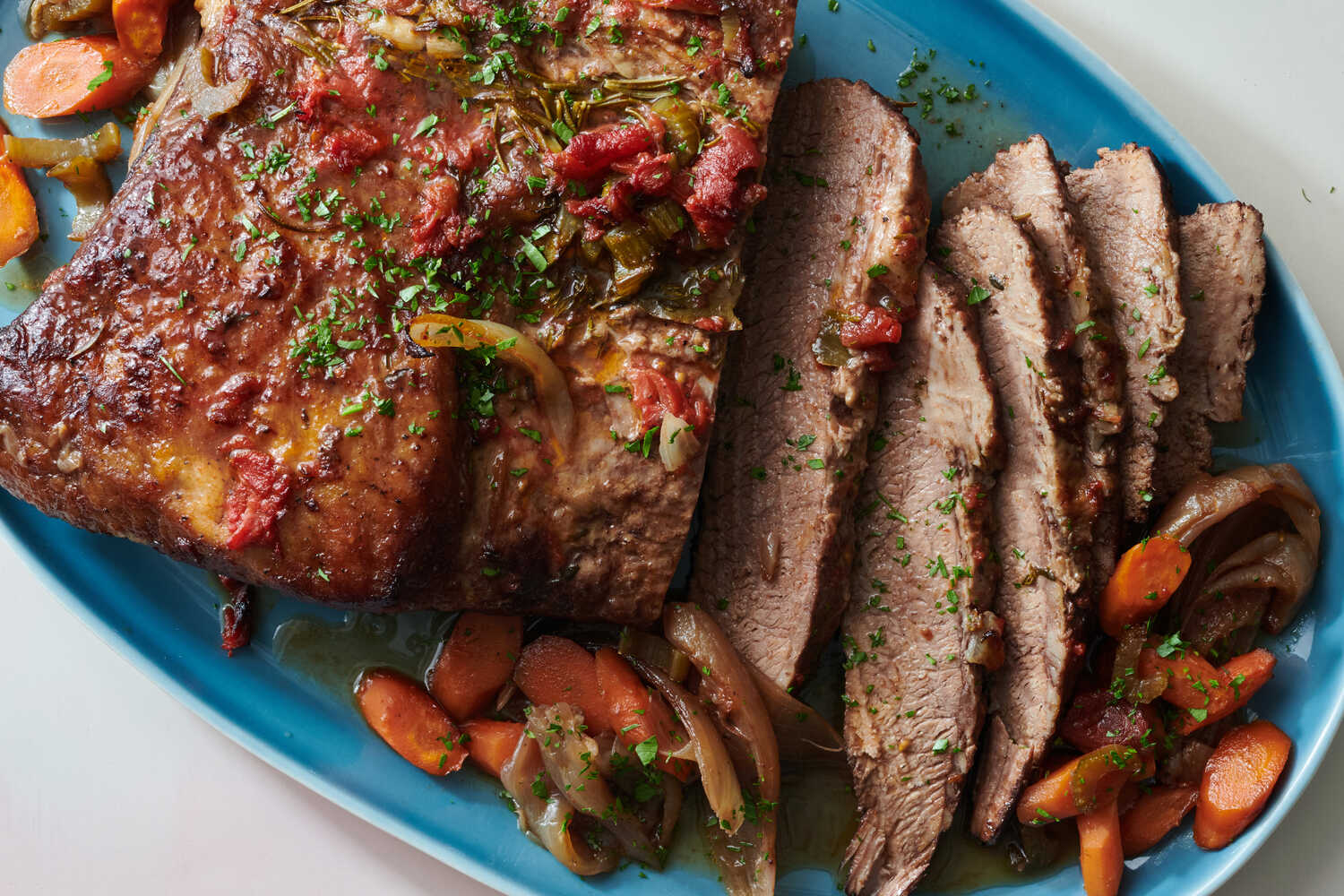
The Art of Brisket Cooking
What Makes Brisket Unique?
Brisket is not just any cut of meat; it’s the bold, flavorful centerpiece of many culinary traditions. Its unique characteristics stem from its location on the cow, lying within the chest area, which undergoes substantial movement. This results in a tougher piece of meat that, when cooked correctly, transforms into tenderness and flavor.
- Flavor Profile: With its rich marbling, brisket boasts a deep, robust flavor, perfect for absorbing spices and smoking flavors.
- Cultural Significance: From Texas barbecue to Jewish pot roasts, brisket carries a storied history that reflects various cooking styles and cultural significance.
Factors Affecting Brisket Texture
The texture of brisket is a fine balance dependent on several factors:
- Cooking Temperature: Ideal temperatures range from 250°F to 275°F for optimal fat rendering.
- Moisture: Spritzing during the cook can help maintain moisture but excessive spritzing may disrupt cooking.
- Meat Quality: The grade of brisket (Choice, Select, Prime) notably influences its tenderness and flavor.
Mastering these elements is vital to achieving that mouthwatering, fall-apart brisket texture that both chefs and home cooks aspire to create. As one seasoned pitmaster noted, “If it’s not jiggly, it’s not done!” Understanding these nuances will elevate any brisket cooking endeavor.
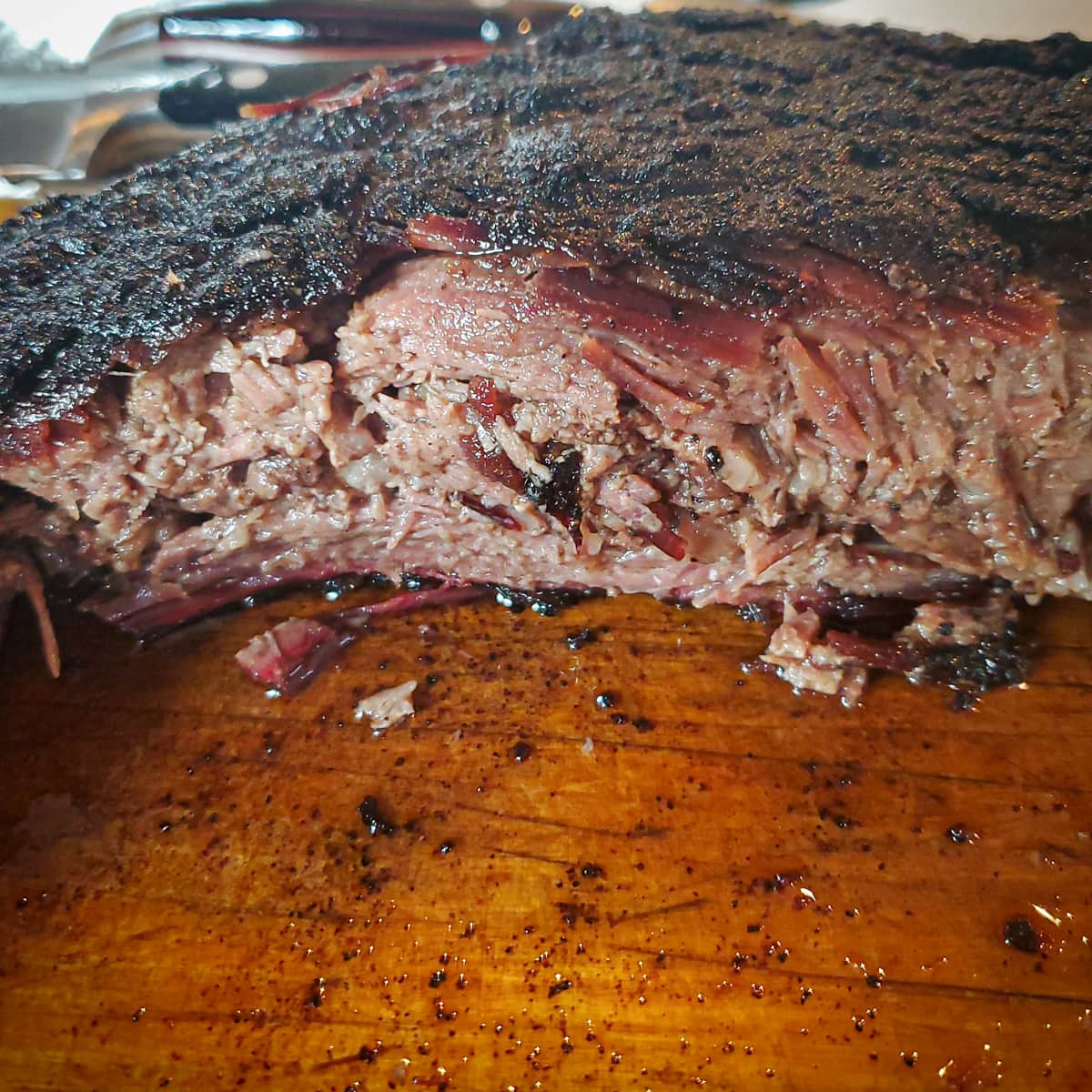
Achieving the Perfect Brisket
Importance of Proper Preparation
When it comes to brisket cooking, preparation is half the battle. A well-prepared brisket sets the stage for an outstanding meal, and it’s a lesson that comes from experience—both trial and error.
- Trimming: Aim to leave about a 1/4-inch layer of fat. This will help keep your brisket moist during cooking.
- Seasoning: Don’t underestimate the power of salt and pepper. Generously seasoning the brisket enhances its natural flavors.
- Marinating: Try incorporating a marinade or dry rub for at least a few hours—overnight is even better—allowing the flavors to penetrate deep into the meat.
Mastering the Cooking Techniques
Cooking techniques are where passion meets precision.
- Temperature Control: Many experts recommend a cooking range between 250°F and 275°F.
- Monitor the Doneness: A probe should slide into the thickest part of the brisket with little resistance, ensuring the connective tissues have broken down.
- Braising: Consider techniques like braising, as in Aunt Annette’s recipe, where finishing the cooking process in the liquid ensures tenderness.
By embracing these preparation and cooking techniques, brisket enthusiasts can create a deeply flavorful and tender dish that delights every palate.
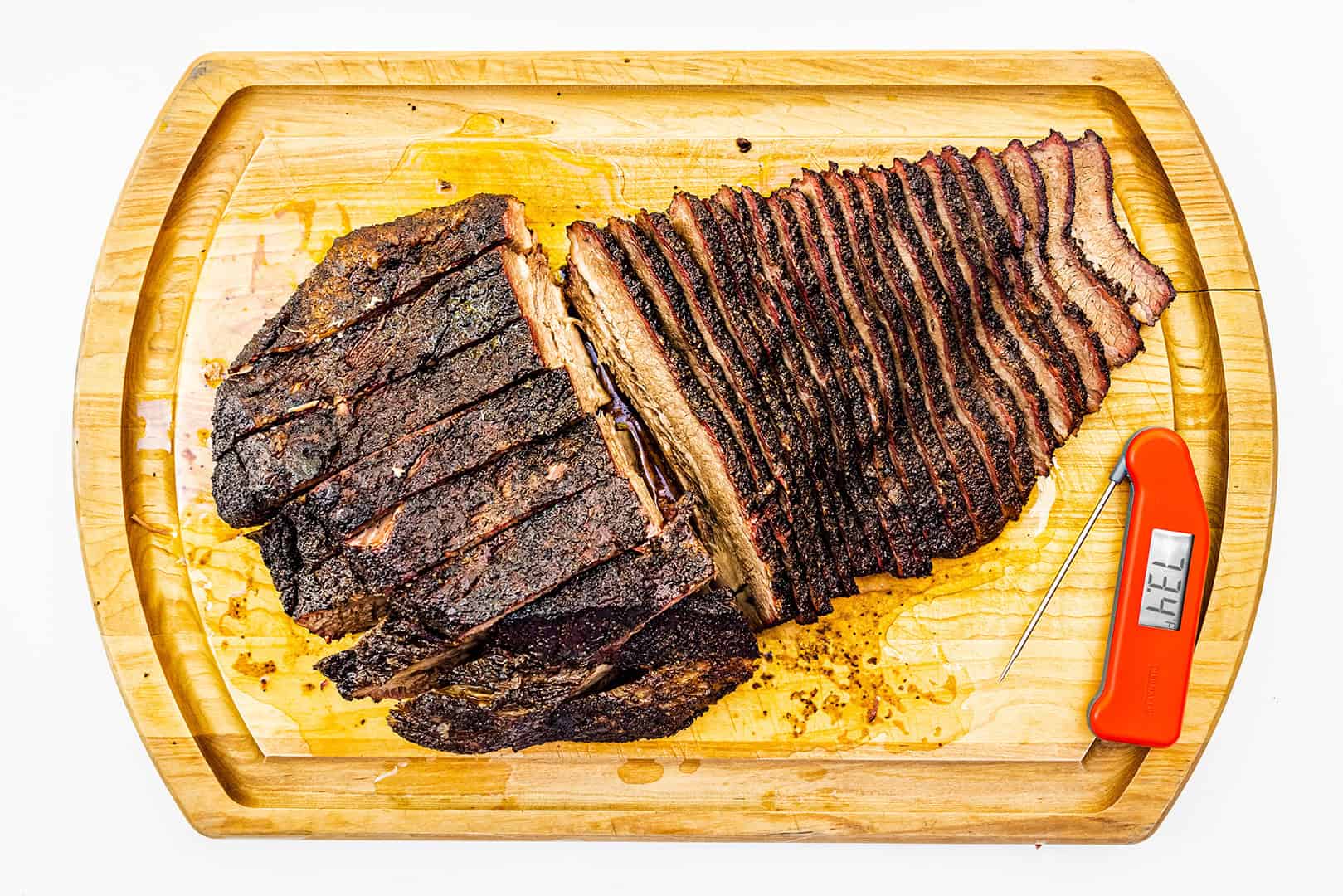
Fine Line Between Tender and Overcooked
Signs of Undercooked Brisket
Undercooked brisket can be a real letdown for any cook, and recognizing the signs early is crucial.
- Texture: If the brisket slices are tough and chewy, it’s likely undercooked. The connective tissues haven’t broken down, preventing that melt-in-your-mouth experience.
- Temperature Check: Generally, the brisket should feel jiggly and a probe should slide in with little resistance beyond 200°F.
- Surface Appearance: If the outer layer appears leathery or dry, but the internal temperature reads low, the brisket is likely not done yet.
As one BBQ enthusiast wisely noted, “Don’t rely solely on temperature—use it as a guide to start probing for tenderness.”
Risks of Overcooking Brisket
On the flip side, overcooked brisket can be equally disappointing:
- Texture: The telltale sign is crumbly, dry meat that falls apart, lacking moisture and flavor.
- Cooking Too Hot: Cooking at very high temperatures can lead to a loss of juices, leaving your brisket dry.
- Excess Cooking Time: If the brisket is left on the heat too long, even at an ideal temperature, it can suffer from drying out.
Remember, aim for that sweet spot between perfectly tender and overcooked. Many cooks prefer to err slightly on the side of overcooked rather than undercooked, as moist but slightly broken-down brisket beats chewy and tough any day

Brisket Cooking Methods
Slow Smoking vs. Sous Vide
When exploring brisket cooking methods, two popular techniques often come to the forefront: slow smoking and sous vide. Each method offers a unique approach that appeals to different cooks and their preferences.
- Slow Smoking: This traditional technique is a favorite for barbecue enthusiasts. Smoking brisket over low heat allows the meat to absorb deep, smoky flavors, breaking down tough fibers for that desirable tenderness.
- Pros: Rich flavor development, beautiful bark formation, and a fun outdoor cooking experience.
- Cons: Time-consuming, requiring careful temperature management, and can be affected by external weather conditions.
- Sous Vide: This technique involves vacuum-sealing the brisket and cooking it in a water bath at a precise temperature.
- Pros: Consistent results, tender meat every time, and minimal oversight during cooking.
- Cons: Lacks the smoky flavor that traditional smoking offers and typically requires finishing in a hot pan or grill for a proper crust.
Both methods can yield delicious brisket, but the choice depends on the desired flavor profile and time commitment of the cook. Each approach delights those lucky enough to enjoy the finished product!
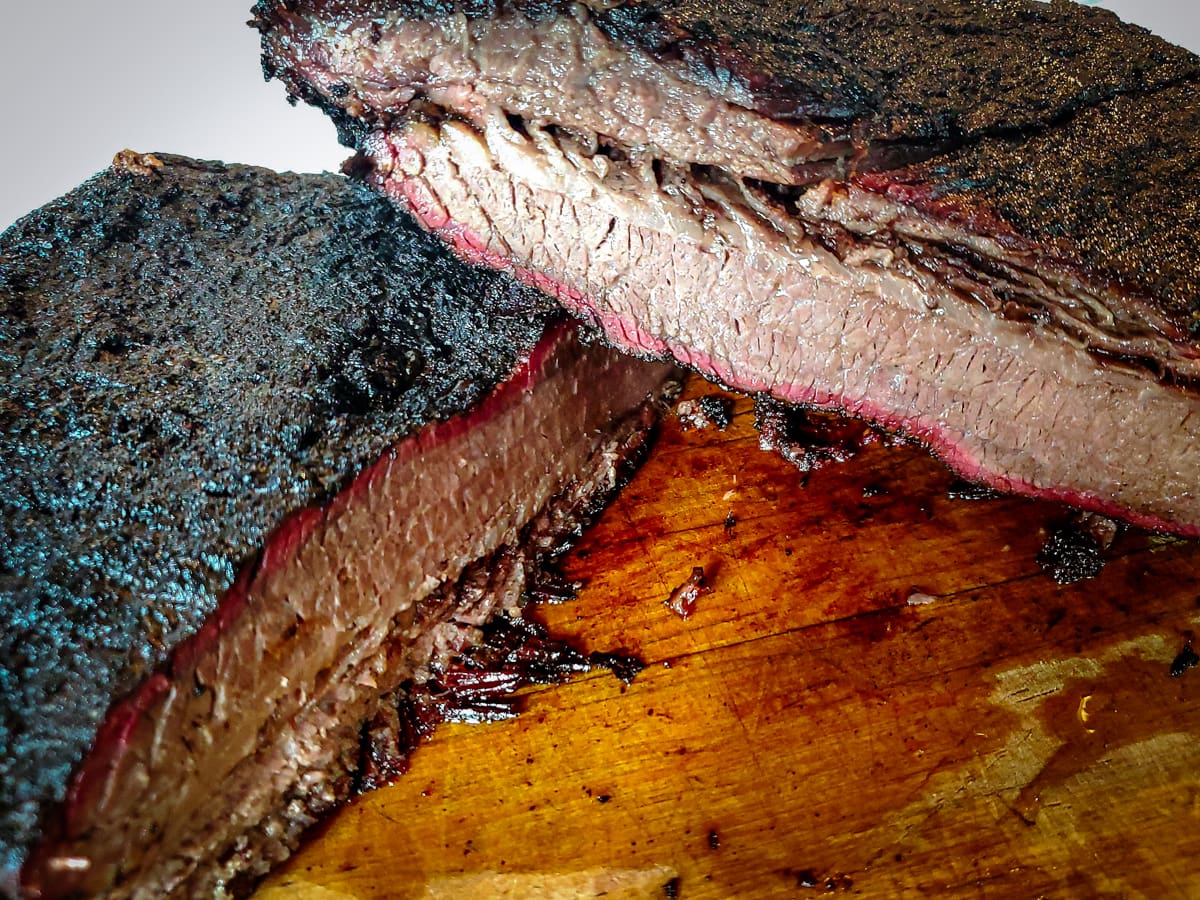
Enhancing Brisket Flavors
Seasoning and Marinades
One of the keys to an unforgettable brisket lies in how it is seasoned and marinated. Many home cooks, particularly those just starting out, underestimate the impact of the right spices on flavor. A simple rub of salt and pepper is classic, but here’s where creativity shines!
- Utilize a Rub: Experimenting with rubs can elevate your brisket. Consider adding garlic powder, onion powder, paprika, or even a hint of cayenne for a kick.
- Marination: Marinating overnight in a combination of your favorite sauces and spices can infuse the meat, making it flavorful from the inside out. Techniques like incorporating sweet wine or fruit juices can add a lovely depth to the brisket.
Importance of Resting Period
After all that hard work, don’t forget to give your brisket a well-deserved resting period!
- Resting Time: Letting the brisket rest for at least 30 minutes allows the juices to redistribute throughout the meat, preventing dryness when sliced.
- Flavor Concentration: This time also enhances the overall flavor, making each bite more satisfying and succulent.
As you aim for that perfect brisket, remember that seasoning and resting are vital components that will make a world of difference in your final dish!
Troubleshooting Brisket Mistakes
Salvaging Overcooked Brisket
Even the most seasoned pitmaster can run into trouble with overcooked brisket, leaving the meat dry and crumbly. Fortunately, there are ways to salvage your brisket and make it enjoyable again!
- Moistening with Broth: Cut the brisket into smaller pieces and soak them in beef broth or a flavorful sauce. This not only revives the meat’s moisture but also adds flavor.
- Making a Chili or Stew: Incorporate the brisket into a hearty chili or stew. The liquid will help regenerate some moisture, and the spices will mask any dry spots.
- Pulled Brisket Sandwiches: Shred the overcooked brisket for sandwiches, combining it with BBQ sauce to give it new life and that classic flavor combo.
Tips for Tenderizing Tough Brisket
If your brisket turned out tougher than expected, don’t despair. There are a few simple tricks to help tenderize it:
- Resting Time: Always allow the brisket to rest for 1-2 hours after cooking. This redistributes the juices and can dramatically improve the texture.
- Slice Across the Grain: Cutting against the grain minimizes chewiness and enhances tenderness.
- Use a Meat Mallet: For especially tough pieces, gently pound the meat with a mallet to break down the fibers.
With these troubleshooting tips in your arsenal, you can rescue your brisket and enjoy every delicious bite!
Serving and Pairing Brisket
Ideal Side Dishes
Serving brisket is an art in itself, and choosing the right side dishes can elevate the entire meal. Here are some classic and creative options to consider:
- Coleslaw: The crunch and acidity of a tangy coleslaw balance perfectly with the rich, smoky flavors of brisket.
- Baked Beans: Flavorful, sweet baked beans are a traditional favorite that pairs well with brisket’s savory notes.
- Potato Salad: A creamy or mustard potato salad can bring a cool contrast to the warm, succulent brisket.
- Pickles: Their sharpness works wonders to cut through the richness of the meat, refreshing the palate.
Experimenting with these sides can lead to delicious discoveries—like a friend who, after a backyard cookout, swears by pairing brisket with grilled corn on the cob!
Beverage Recommendations for Brisket
When it comes to drinks, the right beverage can elevate your brisket meal:
- Red Wine: A bold Cabernet Sauvignon or a Zinfandel complements the brisket’s robust flavors beautifully.
- Craft Beer: An amber ale or a porter pairs well, enhancing the smoky elements while providing a refreshing contrast.
- Cocktails: Try a whiskey-based cocktail for something a little different, as its warm spices match well with smoky meat.
Don’t forget non-alcoholic options—like iced tea or sparkling water with lime—that can also refresh your taste buds between bites!

Exploring Brisket Variations
Regional Brisket Styles
Brisket, with its rich history and diverse flavor profiles, varies significantly depending on where it is prepared. Each region adds its flair, making this cut of meat a global delight.
- Texas BBQ: Known for its smoky, peppery flavor, Texas-style brisket is typically seasoned with just salt and pepper before being slow-smoked to perfection. The emphasis is on the meat itself, showcasing its natural flavors.
- Jewish Delis: Jewish cuisine offers delicious variations like brisket braised with sweet wine and dried fruits, reminiscent of Aunt Annette’s holiday recipe, blending sweet and savory for a comforting dish.
- Korean BBQ: An innovative twist comes from Korean cuisine, where brisket is marinated in a mix of soy sauce, garlic, and sugar before grilling, producing a punchy and tender result.
Innovative Brisket Recipes
Grill master Steven Raichlen doesn’t just stick to traditional recipes; he encourages creative experimentation. Some standout dishes include:
- Brisket Ramen: Combining Asian flavors with a classic, this dish transforms brisket into a delightful noodle soup.
- Brisket Banh Mi: This Vietnamese sandwich showcases brisket’s versatility, merging flavors of pickled vegetables and fresh herbs.
Embracing both regional styles and innovative recipes can take your brisket game to exciting new levels, tantalizing the taste buds of family and friends alike!
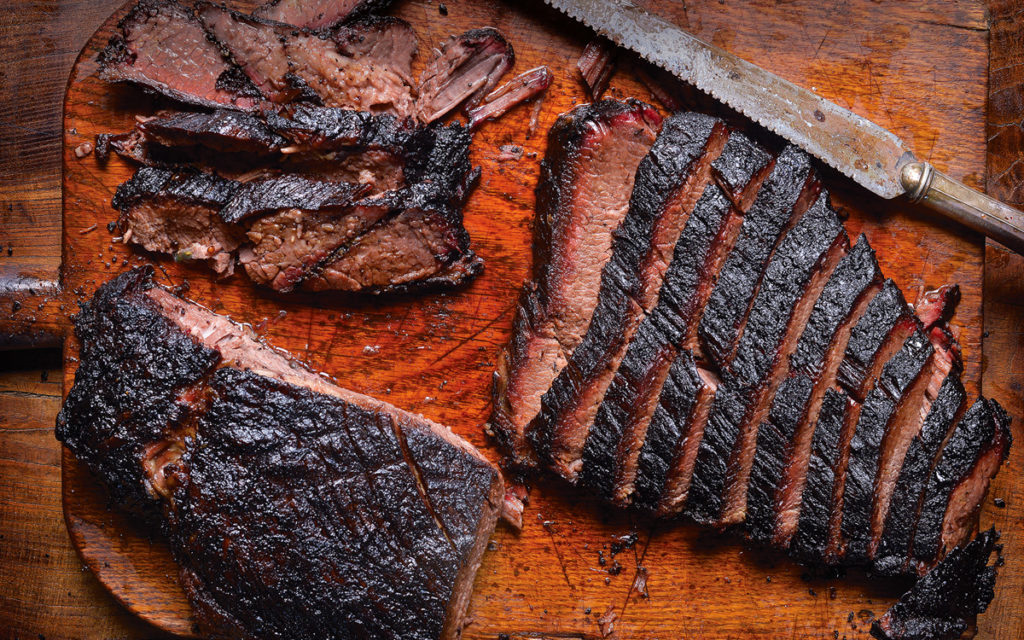
The Joy of Brisket Experimentation
Customizing Cooking Methods
One of the most exhilarating aspects of brisket cooking is the freedom to experiment with different methods. Each technique brings its own unique flavor and texture to the table, allowing cooks to find their personal favorites.
- Smoking: Using wood chips for smoking can impart deep flavors. Experiment with different types like hickory, mesquite, or cherry wood to see how they influence the final taste.
- Braising: Try braising your brisket in a mixture of beer and beef broth for a tender result steeped in rich umami flavors.
- Sous Vide: This method allows for precise temperature control, ensuring consistent results every time. You can cook brisket at a lower temperature for longer periods to achieve melt-in-your-mouth textures.
Creating Your Signature Brisket Dish
As you experiment, don’t hesitate to create your signature brisket dish. Gear up with unexpected flavors and combinations that reflect your personality.
- Innovative Ingredients: Incorporate different marinades, like a zesty chimichurri or a spicy Korean BBQ glaze, to make your brisket stand out.
- Unique Pairings: Think of pairing brisket with something unconventional, like a charred pineapple salsa or an apple chutney, to elevate the dish.
Whether you’re trying new methods or tweaking classic recipes, the journey of brisket experimentation can lead to delicious discoveries and impressive meals that will surely impress family and friends.

Leave a Reply